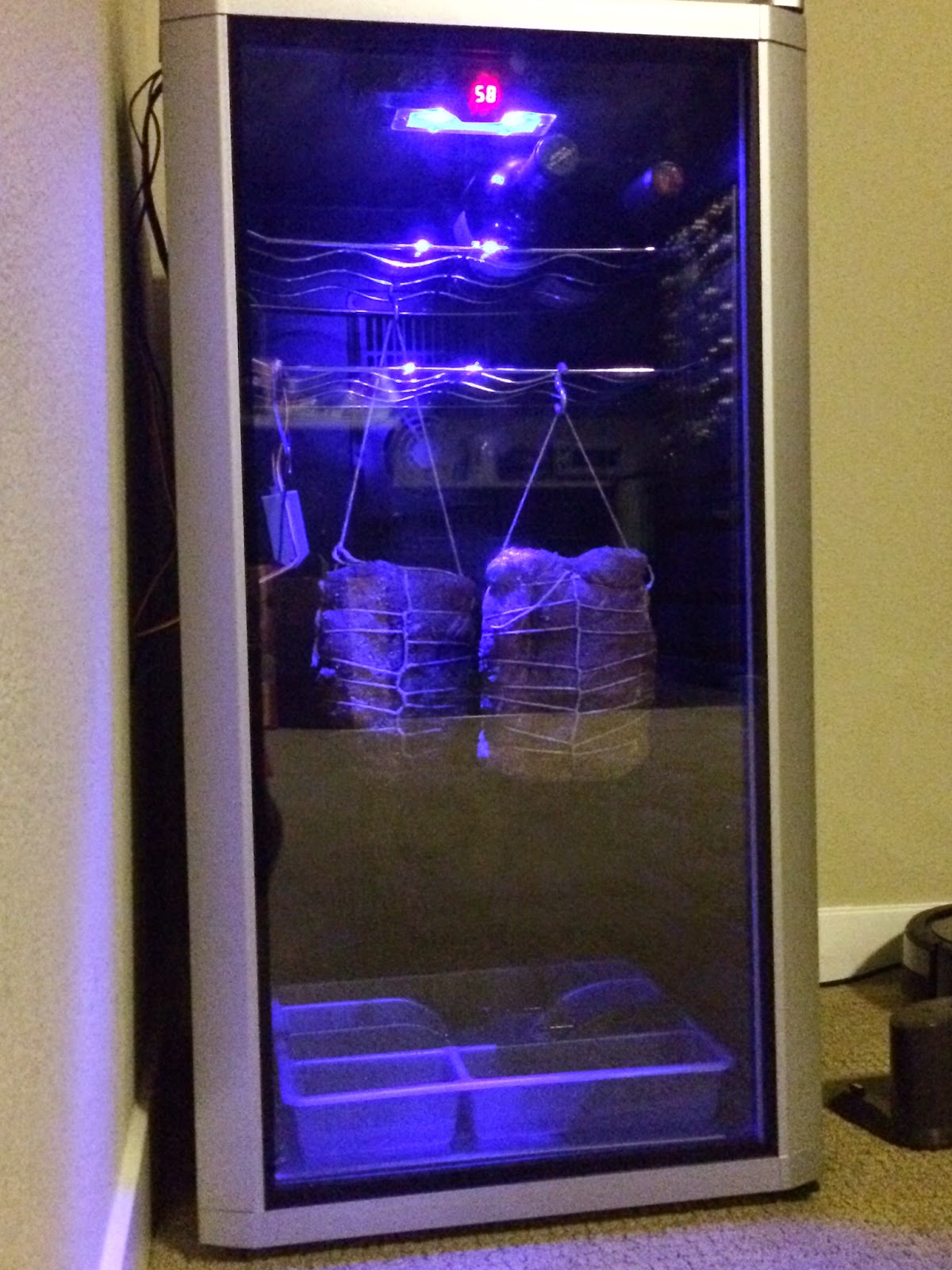Lonza is a fancy Italian word for cured loin. Of course, we are talking about pork here. The diminutive Lonzino would be a narrower cured tenderloin, and Lomo is the Spanish version of the same thing, typically slathered in paprika. Curing whole muscles is the easiest way to get into dry curing, several of my first attempts were with Bresola, a beefy facsimile made with eye of round. Lean cuts are less finicky than their fatty (Coppa) or ground up (Salami) counterparts. The extra fat in those preparations, although delicious, can go rancid quickly if not tended to by expert finesse.
I've acquired a new curing chamber and this is my first go with it. It's a
32 bottle wine cooler that I bought new off of eBay for $170 shipped. I also bought this
humidity monitor which was about $26. So the total cost to play was under $200. Not bad. I deliberated for a long time whether to go with a traditional fridge with a compressor, or a wine fridge with a thermoelectric cooler. Conventional wisdom says that normal refrigerators are better because they run dry, and it's easy to add humidity with a humidifier and controller. With a thermoelectric based fridge, the internal humidity is fairly dependent on the ambient humidity, and it's harder to remove humidity from the ambient environment, or the small wine cooler. In any case, I decided to forge ahead, figuring I could monitor and make manual adjustments as needed for the time being. So far, my humidity sensor has read 60%RH ±2% every single day inside of the wine cooler. I am thrilled with this stability.
I purchased my pork from an Italian grocery store named Piazza's Fine Foods. I purchased a rather large 5 pound loin that I decided I would portion it into two pieces and make two different flavors. My recipes and inspiration came from Michael Ruhlman's great
Salumi book. I made the Peppered Lonza, and I applied one of the Coppa recipe's spice mixtures (bay leaf, juniper and thyme) to the other lonza. I heavily salted each piece and added toasted and ground black pepper to the bag in which they would cure for a little over a day. The salt-box method says that the cure should be applied for 1 day per 2 pounds. Since my pieces were 2.5lbs, I went for a day and a half. 36 hours to be exact. The pieces were weighed down with a cookie sheet and weights comprised of whatever else was in the fridge. The pieces were flipped at the 22 hour mark.
Once removed from the cure, the pieces were rinsed and patted dry, then rubbed with red wine. Another coating of their spices was applied before tying. Pepper for one, and juniper, bay leaf, thyme and pepper for the other. The spices were ground as fine as possible. They were then weighed and placed into the curing chamber where the conditions would be checked on everyday, and the pieces inspected for mold. The aging should take 3-4 weeks, for the final product to lose 30% of its original weight. Stay tuned and I will update the progress of how this turns out.




















